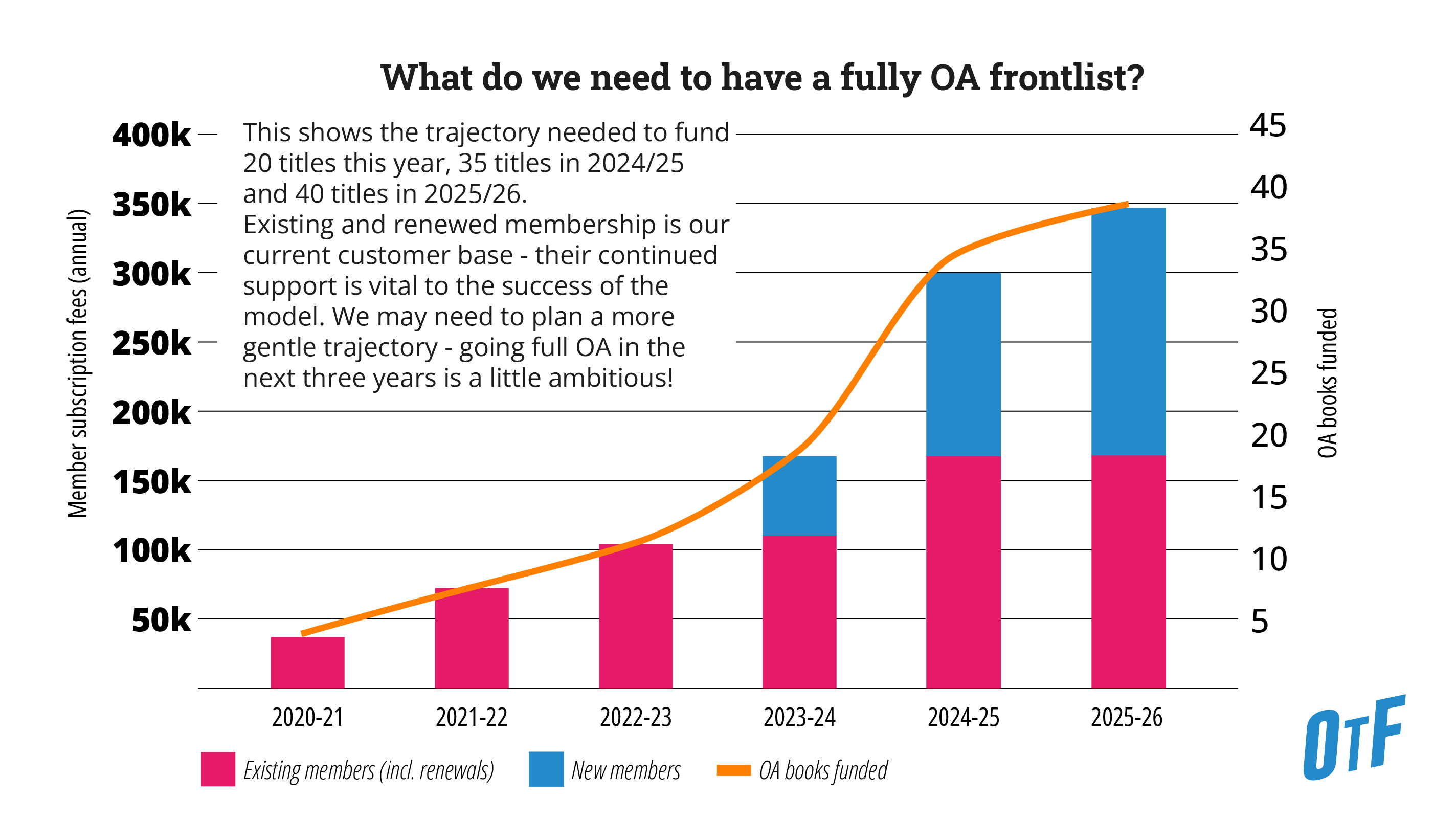Comments from current users of Opening the Future
Hear from staff at Central European University Press and Liverpool University Press, who have both been using the model since its inception in 2020.
CEU Press implemented the Opening the Future model in 2021, and has been running it successfully for the last 4 years with the support of the COPIM colleagues. Having the COPIM staff on hand initially made a huge difference to the implementation at the Press as we only had a small team available to administer the model, ensure invoicing and access setup, work on outreach - anything that is necessary to establish the model in the community, and for continuity and scalability. In this time, we worked on setting up our own administrative workflows to ensure we can continue working with the model as long it is needed.
Our approach to the model was to have a lot of flexibility with regards to package choices and start dates as well as payment terms, which, while convenient for libraries, lead to more administrative efforts than initially planned for. For any presses starting with the model now I would definitely recommend a fixed support cycle, as well as considering how to renew library support after the first three year cycle from the start. Tracking revenues and renewals on a fixed annual cycle would reduce the administrative efforts required considerably, and make it even more viable for small presses. The main effort to increase the uptake by libraries is outreach and library relations - the most enjoyable part of the job, involving webinars, conferences, and other contact points with the market, and both personally and in terms of OA support, the most rewarding.
The approach to work with the entire frontlist as an open access target is quite ambitious - this may not work for all presses, but using dedicated series or subject areas is also an option that can work. As always, the risk involved in pledging an open access percentage of your titles is very low as it flows with the given support from the library community. For CEU Press, as we look to open up as many titles as possible, OtF supports authors from regions that do not have funding for OA. Through the model, we have collected funding for over 55 titles up to the year 2027, and the three-year library support agreement helps us plan the next few years OA publications - we always know the minimum funding we have available, and how many titles this definitely translates into. Any supporters joining during this period add to the pool, and add to the number of publications.
Our authors are very happy with the options granted by the model, and so are we. We may tweak the approach in the coming years, based on feedback from the library community, but that is the beauty of the model. It can adapt to the requirements of both the publisher and the library.
– Kat Baier, Central European University Press
University presses exist to disseminate scholarship. A majority of university presses have long-standing programmes rooted in the humanities, disciplines for which the monograph remains a significant vehicle both to conceptualise research and to share it. Repeated narratives of the decline of the monograph ignore the strength of supply, with an unending pipeline of authors driven by a compelling mixture of intellectual hunger and career necessity. They ignore a growing potential audience, as the drive for impact has created ever more urgent and engaging long-form research outputs. The problem, of course, is the model. Open access has for some years served to unite authors with wider potential readership for journals but it has not been systematically adopted for books because of the substantial costs arising from length, complexity and curation. Faced with the possibility of a well-funded, openly available STEM and a closed-access, narrowly available HSS, scholarly book publishers should be willing to explore new models that maximise the audience for the monograph.
Opening the Future, with its realistic acknowledgement of publisher costs and of the realities of library budgets and policies, offers a potentially sustainable model to reform the dissemination of scholarly books. Liverpool University Press is ideally placed to test that assumption, as a mission-based publisher operating entirely without subsidy or endowment. If we can make the model work without a financial safety net then it should be possible for any publisher to make it work.
To test the hypothesis behind OtF we have opted to work at series/discipline level. This has two advantages: first, it enables us to leverage an existing strength of the Press in the Modern Languages. We know who to market to, while librarians know that the LUP imprimatur is a guarantee of quality. OA may in time also serve as an editorial differentiator for prospective authors in our chosen field. Secondly, working at series level allows for more rapid progress than expensive larger collections but also avoids the inefficiency of title-by-title OA. Funding levels for a series OtF are comfortably within library means, while for publishers it is a minor risk but a major opportunity, with the option to scale up if the model gains traction.
– Anthony Cond, Liverpool University Press
This graph shows CEU Press' progress and aspirations for OtF, 2020-2026.


No Comments